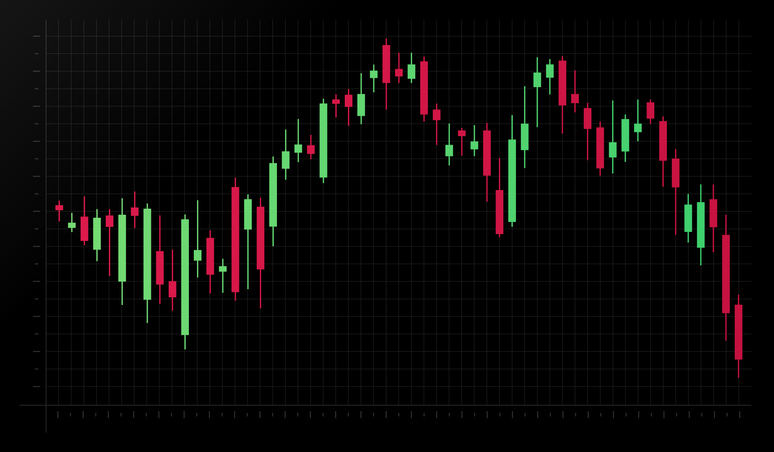Since acquiring TD Ameritrade, Schwab has integrated the popular Thinkorswim trading platform into their own online brokerage. Thinkorswim excels at complicated, highly technical trading, exactly what options traders need. This complexity is why options trading is risky and typically pursued by experienced investors. If you’re a Schwab customer who is ready to get started with options trading, here’s what you should know about getting those permissions on your account.
A financial advisor can help you develop your approach to options strategies.
What Is Options Trading?
First, it’s important to understand the fundamentals of options trading. An options contract is a form of financial security called a “derivative.” That means it takes its value from some other underlying asset. With an option, you purchase a contract that gives you the right to buy that underlying asset (a “call” option) or sell it (a “put” option) for a given price on a given date if you choose. You then make – or lose – your money based on how that asset’s price moves.
For example, you might by a call option for 100 shares of ABC Corp. with a strike price of $100 per share and an expiration date of June 1. This means that:
- The underlying asset is 100 shares of ABC Corp.
- As a call option, you have the right to buy those shares
- You have the right to buy those shares on June 1
- You can buy the shares for $100 per share
Here, you are betting that the price of ABC Corp. will go up. If it does, and the stock is worth more than $100 per share on June 1, you can buy those shares for less than they’re worth and profit off the difference. A put option, by contrast, would bet that the value of those shares declines so that you can sell them for more than they’re worth.
What to Do With Unprofitable Options
You do not have to exercise your option. If, on the expiration date, your contract is unprofitable you can simply let it expire with no further action. In our example above, say that on June 1 your shares are worth $90 each. You would lose money buying them for $100 per share, so you decline your option.
Buying an options contract costs money. This is known as the premium. In our example above, say the party selling you this contract priced it at $1.00 per share. It would cost you $100 to buy that contract.
Premiums are a fixed cost that you pay up front. For someone who buys an option contract, they make up a real but predetermined risk to this asset class. This is good. Because your risks are known up front, you cannot lose more than you invested when you buy an options contract. However premiums can still cost a lot of money, and options should absolutely be considered a speculative investment.
How To Add Options To A Schwab Account

Adding options to your Schwab account is a simple process, but you’ll need to apply and get approved.
If you do not already have a brokerage account with Schwab, you will need one. You can sign up through Schwab’s website. Unlike some brokers, Schwab doesn’t require a minimum balance to open an account.
Once you have an account, you must specifically apply to add options trading.
Levels of Options Permissions
Schwab offers four levels of options trading. They are listed numerically, from 0 to 3, or by the level of trading each allows: “Covered,” “Long,” “Spreads,” and “Short Uncovered.” Each allows you to trade with an escalating level of risk and complexity. At level 0, you can only engage in relatively simple practices where losses are capped at the level of your initial investment. At level 3, you can engage in a wide variety of complicated and high-risk strategies for trades.
You will apply for options trading based on the level of permission you would like. For example, you might apply for a Level 1, “Long,” account if you would like to engage in modestly complex trades without high risk. Not all accounts are eligible for different types of options trading. For example, in an IRA you cannot open a position with borrowed money or potentially unlimited risk, so Schwab disables Level Three. If you apply for Level Three trading with an IRA account, it will be rejected.
How to Apply
You can apply to add options in two ways. First, you can print out and mail in the application form in hard copy.
Alternatively, you can fill out the form online. In your account, you will find a drop-down menu labelled “Profile.” In there, you can select the choice for “Margin & Options.” If you have multiple accounts or portfolios, select the one to which you would like to add options trading.
Then, select the level of options trading you would like to apply for. Each one will be listed with a separate option to apply, although the system will black out any trading level that your account cannot access. For example, IRA investment options will not have a link to apply for Level Three trading.
This will take you to an online form which will request the same information as the downloadable form. In both cases, you will be asked to provide personal and financial information, including your profession, income, and net worth and your spouse’s if applicable. You will also be asked about your background as a trader, such as how many years you have been investing and the complexity of your trading activity. Together, this will make up a basic profile that Schwab will use to determine whether you are experienced enough to make riskier investments, and if you have the capital to handle losses.
From there, it typically takes three to five business days for them to process an application.
Common Options Strategies by Permission Level
Schwab’s four levels of options trading permissions correspond to the complexity and risk of the strategies you can use. Here’s a quick guide to what you can do at each level:
- Level 0: Covered Calls. This most basic level allows you to sell covered calls against stock you already own. This strategy generates income but limits your upside if the stock price rises above the strike price.
- Level 1: Long Calls and Puts. At this level, you can buy calls (betting on a stock price increase) or put options (betting on a price decrease). Both strategies involve defined, limited risk equal to the premium paid.
- Level 2: Spreads. With Level 2, you can use multi-leg strategies such as vertical spreads, which combine buying and selling options to limit both potential risk and reward. These are more advanced but can be effective for specific market outlooks.
- Level 3: Naked Puts or Short Calls. The most advanced level allows you to sell uncovered (or “naked”) options, such as writing a call without owning the underlying stock. These strategies carry significant risk and require the highest level of experience and financial stability.
Understanding Fees and Commissions
Before you start trading options at Schwab, it’s important to understand the costs involved. Like most brokers, Schwab charges a per-contract fee for options trades. As of now, Schwab charges $0.65 per contract, with no base commission. For example, if you trade 10 contracts, your total fee would be $6.50.
These fees are competitive with many other major brokers, falling in line with Fidelity, E*TRADE, and others who also charge around $0.50–$0.65 per contract. Unlike some brokers, Schwab does not charge additional platform fees to use Thinkorswim, making it a strong choice for active traders who want robust tools without extra costs.
However, keep in mind that certain advanced strategies may incur additional charges. For example:
- If your option is exercised or assigned, standard equity commissions may apply for the resulting stock trade.
- Certain spreads or multi-leg strategies still incur the per-contract fee on each leg of the trade.
It’s also worth noting that regulatory and exchange fees (which are usually just a few cents per contract) may apply, but these are standard across the industry. Always review Schwab’s current pricing schedule before you trade.
Bottom Line
With Schwab, you can trade options on four different levels based on your desired complexity and risk. You can apply either online or through a paper form, and once approved you can use the Thinkorswim platform for technical trading. Options are high-risk and values swing sharply compared to the regular stock market. Consider talking to a financial advisor about the right level of risk for your portfolio.

Options Trading Tips
- A financial advisor can help you build a comprehensive retirement plan. Finding a financial advisor doesn’t have to be hard. SmartAsset’s free tool matches you with up to three vetted financial advisors who serve your area, and you can have a free introductory call with your advisor matches to decide which one you feel is right for you. If you’re ready to find an advisor who can help you achieve your financial goals, get started now.
- Don’t understand how options work? Don’t worry! If you’re just getting started you shouldn’t add these assets to your portfolio just yet; never, ever trade an asset you don’t fully understand. Instead, let’s start learning about what an options contract is and how it can add value to your portfolio in the long run.
Photo credit: ©iStock.com/peterschreiber.media, ©iStock.com/filo, ©iStock.com/shih-wei
